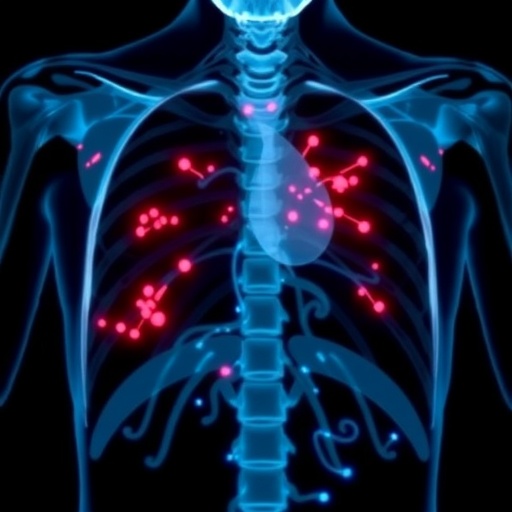In a groundbreaking advancement poised to reshape geriatric medicine, the American Geriatrics Society (AGS) has unveiled a comprehensive update to its list of alternatives to medications flagged in the 2023 AGS Beers Criteria®. Celebrated as the leading framework guiding clinicians in identifying medications potentially harmful to older adults, the Beers Criteria has long served as a cornerstone in promoting safer prescribing practices. The latest update transcends its traditional role by integrating not only safer pharmacologic options but also a powerful emphasis on evidence-based non-pharmacologic therapies, marking a pivotal shift toward holistic and individualized care for frail and aging populations.
The multidisciplinary expert panel behind this update includes 19 nationally recognized professionals spanning 14 states, all of whom bring specialized expertise ranging from pharmacy practice to physical therapy and psychology. Among these contributors is Dr. Noll Campbell of the Regenstrief Institute and Purdue University College of Pharmacy—the sole expert representing Indiana—whose insights were instrumental in fortifying the clinical relevance and practical applicability of the recommendations. Their united effort underscores a paradigm shift from abstinence-focused directives to actionable alternatives that align with patient-centered goals and real-world clinical intricacies.
At the heart of the Beers Criteria lies the identification of medications whose side effect profiles—such as sedation, risk of falls, delirium, and detrimental drug-disease interactions—pose heightened dangers to aging physiology. However, prior iterations often faced criticism for their limited guidance beyond indicating what drugs to avoid. Addressing this gap, the AGS update introduces a sophisticated framework that empowers clinicians with clear, symptom-oriented tables of alternative therapies, inclusive of pharmacologic substitutes and non-drug interventions grounded in robust clinical evidence.
.adsslot_QpKNl0Rvb9{ width:728px !important; height:90px !important; }
@media (max-width:1199px) { .adsslot_QpKNl0Rvb9{ width:468px !important; height:60px !important; } }
@media (max-width:767px) { .adsslot_QpKNl0Rvb9{ width:320px !important; height:50px !important; } }
ADVERTISEMENT
A transformative feature of this initiative is its patient and caregiver-centric approach. Recognizing that medication safety extends beyond prescriber decisions, the AGS has developed a suite of educational materials designed to facilitate informed dialogue, support deprescribing processes, and foster sustainable lifestyle adjustments. This aligns with contemporary emphasis on shared decision-making and highlights the necessity of equipping users at all levels with accessible, trustworthy resources to navigate complex treatment landscapes.
Categorically, the expert panel divided their work into eight focused domains: insomnia and anxiety; allergy and pruritus; cardiovascular and anticoagulation therapies; pain management; delirium and dementia; diabetes control; gastrointestinal syndromes; and genitourinary disorders. Each subgroup conducted meticulous reviews of contemporary, high-quality guidelines and systematic reviews tailored to geriatric populations, prioritizing U.S.-based standards while incorporating international data where methodological rigor and recency justified inclusion. This exhaustive process distilled alternatives pertinent to 21 frequently encountered conditions, underscoring the importance of treating underlying etiologies rather than symptoms alone.
For instance, cognitive behavioral therapy emerges as a front-line non-pharmacologic treatment for insomnia, addressing the disorder’s neurobehavioral roots without introducing sedative risks. Similarly, therapeutic exercise and physical therapy feature prominently for Parkinson’s disease management, mitigating motor symptoms and potentially slowing functional decline through neuroplasticity-enhancing mechanisms. Lifestyle interventions for constipation and dietary modifications for heartburn exemplify tailored approaches that favor physiological normalization over symptomatic suppression. Behavioral and dietary strategies also serve as pivotal alternatives to medication for urinary symptoms, reflecting an adaptive, minimally invasive paradigm focused on quality of life.
Central to the AGS recommendations are five guiding principles designed to recalibrate clinician perspectives: prioritizing patient well-being over mere drug discontinuation; advocating non-pharmacologic methods as initial interventions; rigorously investigating symptom origins prior to prescribing; maintaining nuanced clinical judgment that balances risks and benefits; and leveraging comprehensive resources for both deprescribing and patient empowerment. This framework acknowledges the clinical complexity and heterogeneity inherent in geriatric care, advocating for flexible, individualized treatment plans informed by functional goals and patient preferences.
The panel openly acknowledges the challenges posed by existing literature, which often falls short in addressing the nuances of the oldest and most medically complex patients. The presentation of flexible recommendations encourages clinicians to adapt interventions as patients’ conditions evolve. Such responsiveness is particularly critical given that abrupt medication cessation may precipitate symptom recurrence or exacerbation, potentially undermining therapeutic gains. This reality underscores the necessity for readily implementable alternative treatments that preserve symptom control while minimizing harm.
Dr. Campbell emphasizes that this update aims not merely to issue cautionary advisories but to equip clinicians with tangible tools and actionable pathways toward safer, more effective care. The transition from warnings to solutions epitomizes a modern approach to medication safety, wherein actionable alternatives foster empowerment rather than reluctance. This approach harmonizes with the broader movement within geriatric medicine towards comprehensive, team-based, and patient-centered care models.
Beyond the clinical sphere, the inclusion of patient- and caregiver-facing decision aids reflects a commitment to democratizing healthcare knowledge and fostering autonomy. These materials simplify complex medical information, enabling users to engage meaningfully in care decisions and enhancing adherence to deprescribing and lifestyle interventions. This innovation recognizes the critical role of caregivers and patients as active participants in managing geriatric conditions, particularly in settings such as homes and nursing facilities where medication-related harms often manifest.
The publication of this work in the peer-reviewed Journal of the American Geriatrics Society solidifies its scholarly and clinical credibility. By disseminating these evidence-based alternatives through a respected platform, the AGS aims to accelerate their adoption and influence clinical practices nationwide. The broad geographic representation of the panel—from states including California, Texas, New York, and others—further ensures that perspectives reflect a diverse array of healthcare environments and patient demographics.
Ultimately, the 2023 update to the AGS Beers Criteria alternatives list represents a paradigm shift in geriatric medication safety—from a focus on exclusion to an emphasis on inclusion of safer, evidence-based options. Integrating pharmacologic and non-pharmacologic strategies with patient education and interdisciplinary collaboration, the initiative embodies a forward-looking vision to enhance health outcomes for older adults. This comprehensive approach not only mitigates medication-related risks but also fosters functional independence, symptom relief, and improved quality of life—pillars essential to the future of aging care.
Subject of Research: Alternatives to potentially inappropriate medications for older adults as outlined in the 2023 American Geriatrics Society Beers Criteria®
Article Title: Alternative Treatments to Selected Medications in the 2023 American Geriatrics Society Beers Criteria®
News Publication Date: 23-Jul-2025
Web References: http://dx.doi.org/10.1111/jgs.19500
References: Published in the Journal of the American Geriatrics Society
Keywords: Health and medicine
Tags: American Geriatrics Societyclinical relevance of medication alternativesevidence-based prescribing practicesgeriatric medicine advancementsholistic care for frail populationsindividualized care for elderly patientsmedication safety in older adultsmultidisciplinary expert panel in geriatricsnon-pharmacologic therapies for agingpatient-centered goals in geriatric carerevised Beers Criteria 2023safer medication options for older adults





